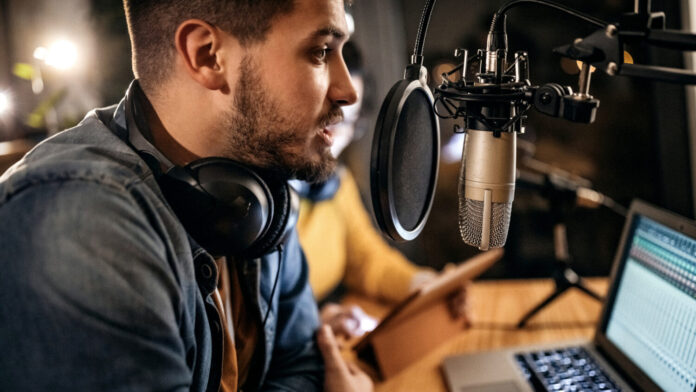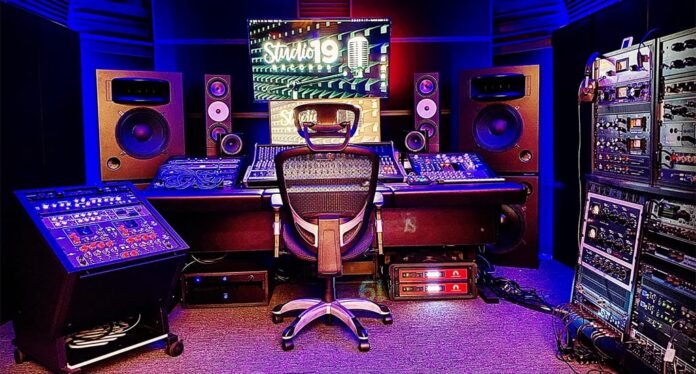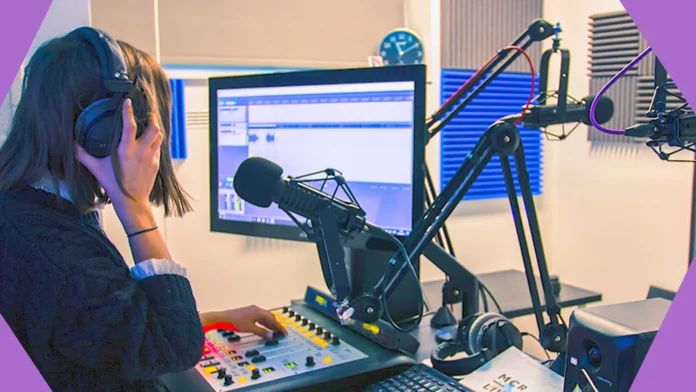Building a hub for transmitting voice and music to the world is no small feat. Launching a radio station, whether commercial, community, or online, requires careful planning, investment, and an understanding of the essential tools needed for success. This comprehensive guide will navigate you through the indispensable equipment, diving deep into the technology that turns raw sounds into captivating broadcasts.

Studio Equipment
When you want to create a radio station, you start by creating its heart, the studio. This space must be stocked with high-quality microphones tailored for broadcasting. Radio microphones differ from regular mics in their frequency response and ability to capture clear voice recordings. It’s vital to choose ones that fit your specific needs and budget.
The studio’s mixing console is another critical component, which manages various audio inputs and outputs. A properly chosen console ensures that you can control every sound that hits the airwaves, blending them seamlessly. Many modern mixers come with automated features, making it easier to control various channels and providing more time for creativity.
Broadcast Software and Hardware
The digital soul of the station lies within the broadcast software and hardware. Many software solutions are designed specifically for radio stations, facilitating scheduling, live broadcasting, and podcasting. Some even provide advertising management and listener analysis, helping you to target your audience effectively.
Hardware components, including servers and computers, must be robust and reliable. Investing in state-of-the-art equipment ensures smooth broadcasting and fewer technical hitches. It’s wise to select hardware that integrates easily with your chosen software, ensuring a coherent system that functions seamlessly from the DJ’s chair to the listener’s ears.

Transmission Equipment
The ability to send your broadcasts to a vast audience depends heavily on your transmission gear. This includes transmitters that convert audio signals into radio waves. For an FM station, it’s important to choose transmitters that meet legal standards, with a power range matching your desired coverage area.
For internet-based stations, audio encoders play a similar role, translating audio into digital data that can be streamed online. Whether terrestrial or web-based, selecting the right transmission tools ensures that your voice reaches as many ears as possible, without sacrificing quality or reliability.
Audio Processing Gear
To maintain a consistent sound that is pleasant to the listeners’ ears, audio processing gear is indispensable. Compressors and limiters help to regulate the volume, ensuring that loud and soft sounds are balanced. These devices keep your broadcast pleasant and engaging, maintaining listener interest.
Equalizers, on the other hand, control the tone, adjusting bass and treble to make sure the sound suits your content and audience. Utilizing this gear professionally can turn an ordinary broadcast into an aural treat, providing an immersive experience that draws listeners in and keeps them tuned.

Recording Equipment
Not all radio content is broadcast live. Pre-recorded interviews, shows, or commercials need specialized recording equipment. This includes high-definition recorders capable of capturing sound in various formats. The right device can make a significant difference in quality, providing crisp, clear audio that enhances the listening experience.
Alongside the recording devices, the proper selection of headphones and monitors is equally crucial. Professionals utilize these tools to listen and analyze the recording in real-time. Ensuring that you have quality headphones and monitors contributes to producing flawless recorded content that resonates with your audience.
Remote Broadcasting Gear
The dynamic nature of radio often requires taking the show on the road. Remote broadcasting gear includes portable microphones, mixers, and other equipment that can be easily transported. Investing in this equipment allows your station to cover live events, conduct on-site interviews, or simply broadcast from unique locations.
Connectivity is vital in remote broadcasting, and specialized technology like ISDN or IP codecs help ensure that your broadcast reaches the station without a hitch. These tools compress and transmit audio data over various networks, enabling your remote team to connect effortlessly with the studio and deliver engaging content from anywhere.

Backup and Redundancy Equipment
No station can afford to go off the air due to technical failures. Backup and redundancy equipment safeguard against such mishaps. This includes spare microphones, mixers, or even entire backup systems that can take over if the primary equipment fails. Planning and investing in these safeguards is not a luxury but a necessity.
Investing in robust data backups, including both cloud and physical solutions, is vital to protect against data loss. Such measures ensure that all recorded content, schedules, and essential information are preserved, allowing for a swift recovery in case of system failure and ensuring uninterrupted service to your listeners.
Soundproofing and Acoustic Treatment
Achieving the perfect sound requires more than just high-end equipment. The studio environment plays a critical role, and soundproofing is essential to eliminate unwanted noise. Proper insulation materials, acoustic panels, and carefully planned layouts can create a studio that is both quiet and acoustically vibrant.
Beyond merely keeping external sounds out, acoustic treatment within the studio ensures that the sound quality within is optimal. Reflective surfaces can be treated with absorbing materials, and diffusers can be strategically placed to control echoes. Together, these measures shape the sound environment, delivering unparalleled audio quality.

Communication Equipment
Communication tools enable seamless interaction between the various parts of the radio station, from the on-air talent to the production team. High-quality intercom systems allow for real-time coordination, which is essential for live broadcasts. They ensure everyone stays in sync, allowing the entire team to respond quickly to changes or unexpected events.
For listener interaction, investing in quality telephone systems for call-ins, interviews, or feedback is essential. Modern systems can integrate with your studio console, providing direct routing and control over the calls. These tools not only enhance the dynamic nature of live radio but also foster a stronger connection with your audience.
Final Thoughts
Embarking on the journey of building a radio station is both exhilarating and challenging. It requires a careful blend of technological know-how, creative vision, and an understanding of the complex landscape of modern broadcasting. By equipping yourself with the right tools and knowledge, the voice of your radio station can resonate far and wide, engaging listeners and building a lasting community around your content.
This guide has offered an in-depth look into the essential equipment required for success in the radio world. From the microphones that capture every nuance to the transmitters that carry your voice to the masses, each piece plays a vital role. May this information empower you to create, innovate, and broadcast your unique sound to a world eager to listen.









